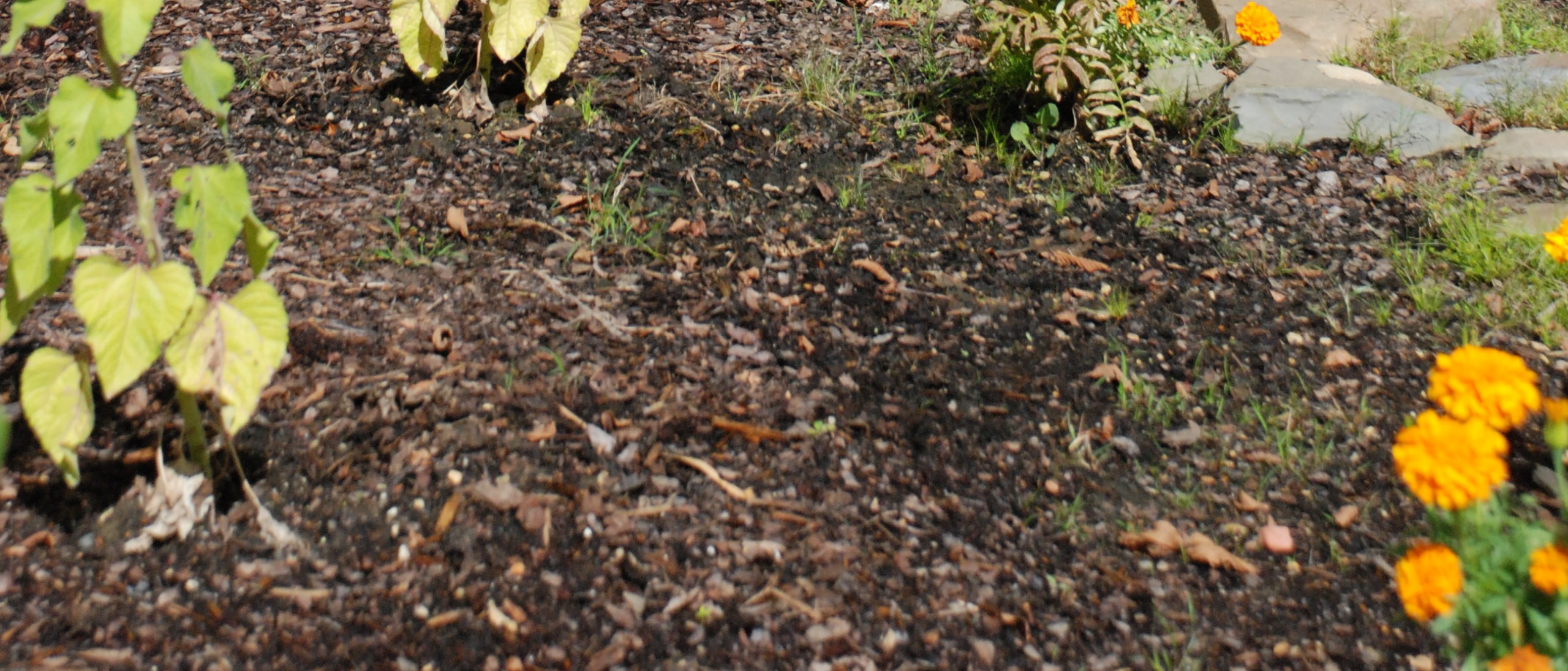
Let it Rot!
Lesson Information
At the end of this lesson, students will be able to:
- Explain the basic process of how compost is made
- Define brown and green compostable materials
- Connect animal, plant, and human food systems
- Distinguish what materials are compostable and what are not
Recommended grades: 5-8
Next Generation Science Standards
- LS1.A Structure and Function
- LS2.A Independent Relationships to Ecosystems
- LS2.B Cycles of Matter and Energy Transfer in Ecosystems
What you’ll need:
- Compost in varying stages
- Bucket with lid (e.g. 5-gallon plastic work bucket)
- Red wiggler worms (Eisenia fetida)
- Newspaper/Dried leaves/Coffee grounds
Teacher preparation:
- Poke small air holes in the bucket to allow the worms to breathe, but not escape
- Collect compost in various stages (i.e. raw materials such as food scraps, decomposing scraps, more mature compost, etc.)
Vocabulary
- Aerate: to circulate or move air; also to add air to soil
- Carbon: a chemical element important for plant matter
- Compost: a mixture of various decaying organic substances
- Fertilizer: a substance used to enrich soil
- Manure: animal waste
- Microorganisms: an organism too small to be seen by the naked eye, such as bacteria
- Nitrogen: a gas element used in fertilizers
- Organisms: a form of life, such as an animal, plant, or fungus
- Pathogens: an agent that can cause disease, such as a virus
- Soil Amendment: a substance added to soil to encourage plant
Pre-Activity Questions
- What is compost? Why is it important?
- What do plants need to grow?
- Nitrogen, Carbon, Water, Sunlight, etc.
- Micro and Macro nutrients found in minerals
Activity Procedure
- Show students the compost examples in various stages. Encourage them to touch and smell it and think about what is it.
- Once students have a basic grasp of what compost is and how it can be used, allow students to brainstorm the following: What you can compost and cannot compost? (See resource list below)
- Create a class compost bin, either outside if temperatures are above freezing or in the classroom. Be sure the bucket has air holes.
- Start the compost by combining different types of compostables with finely shredded newspaper in the bucket.
- Add red wiggler worms and some food scraps. Close the lid when the compost process is not being observed by
- Feed the worms a small amount of scraps (green matter) everyday. Have students monitor which foods the worms like and those they do not seem to like or eat.
- Add in some brown compostables every few days, such as dried leaves or coffee grounds.
- Depending on a number of factors including the size of the bucket, the amount of red wiggler worms, and the temperature, it could take from 4 to 6 weeks for the compost cycle to be complete. Once the compost begins to resemble soil you can filter out the worms and either start a new batch of compost or release the worms.
- Use the compost in the “Don’t Pitch It, Plant It!” lesson of the Garbage to Gardens unit.
*Things to note about the red wiggler worms:
- You will not need to turn the compost or tend to it too much—the worms will do all that for you!
- Worms like dark, still spaces so try not to disturb them too much and make sure the bucket is on a steady surface so they are not subjected to vibration.
Post-Activity Discussion
- What foods did the worms like/not like? Why do you think that is?
- How might composting be a sustainable/eco-friendly activity?
- Does your family compost? Have you talked to them about it?
- What happens to the food/plant scraps if they are not composted?
Garbage to Gardens Takeaway
Compost recycles “garbage” into beneficial fertilizer for gardens and keeps chemical fertilizers out of the soil and water systems.
Activity Resources
What is Compost?
Compost is the most important amendment you can add to garden soil. It is a simple way to add nutrient-rich humus which fuels plant growth and restores vitality and structure to depleted or unbalanced soil. It increases the availability of nutrients to plants, helps the soil retain moisture, and allows pockets of air to form in the soil.Compost is free, easy to make, and good for the environment.
Composting
- Recycles Kitchen and Yard Waste: Composting can divert a significant amount of household waste away from landfills.
- Reduces Landfill Waste: A large portion of landfill waste consists of compostable materials.
- Introduces Beneficial Organisms to the Soil: The microorganisms in compost help to aerate the soil, break down organic material, and ward off pathogens.
- Is Good for the Environment: Compost used as a soil amendment is a natural alternative to chemical fertilizers and does not contribute to toxic build-up or runoff into the water system.
Ingredients for Healthy Compost
All compostable materials are either carbon-rich (brown) or nitrogen-rich (green). A simple rule of thumb is to maintain approximately 1/3 green to 2/3 brown compostables.
GREEN (Nitrogen-rich Materials)
Vegetable and fruit scraps
Farm-derived manures
Grass clippings and green leaves
BROWN (Carbon-rich Materials)
Dried leaves
Branches
Stems
Paper bags (shredded)
Coffee grounds and filters
Tea and tea bags
Eggshells
Wood ash
Dryer lint (from natural fibers)
DO NOT COMPOST
Meat or bones
Dairy products
Oil and fats including butter
Dressed salads
Fruits or vegetables with a sauce
Stickers from fruit and vegetables
Processed foods including bread, pasta, rice, crackers, tofu, and bakery products
